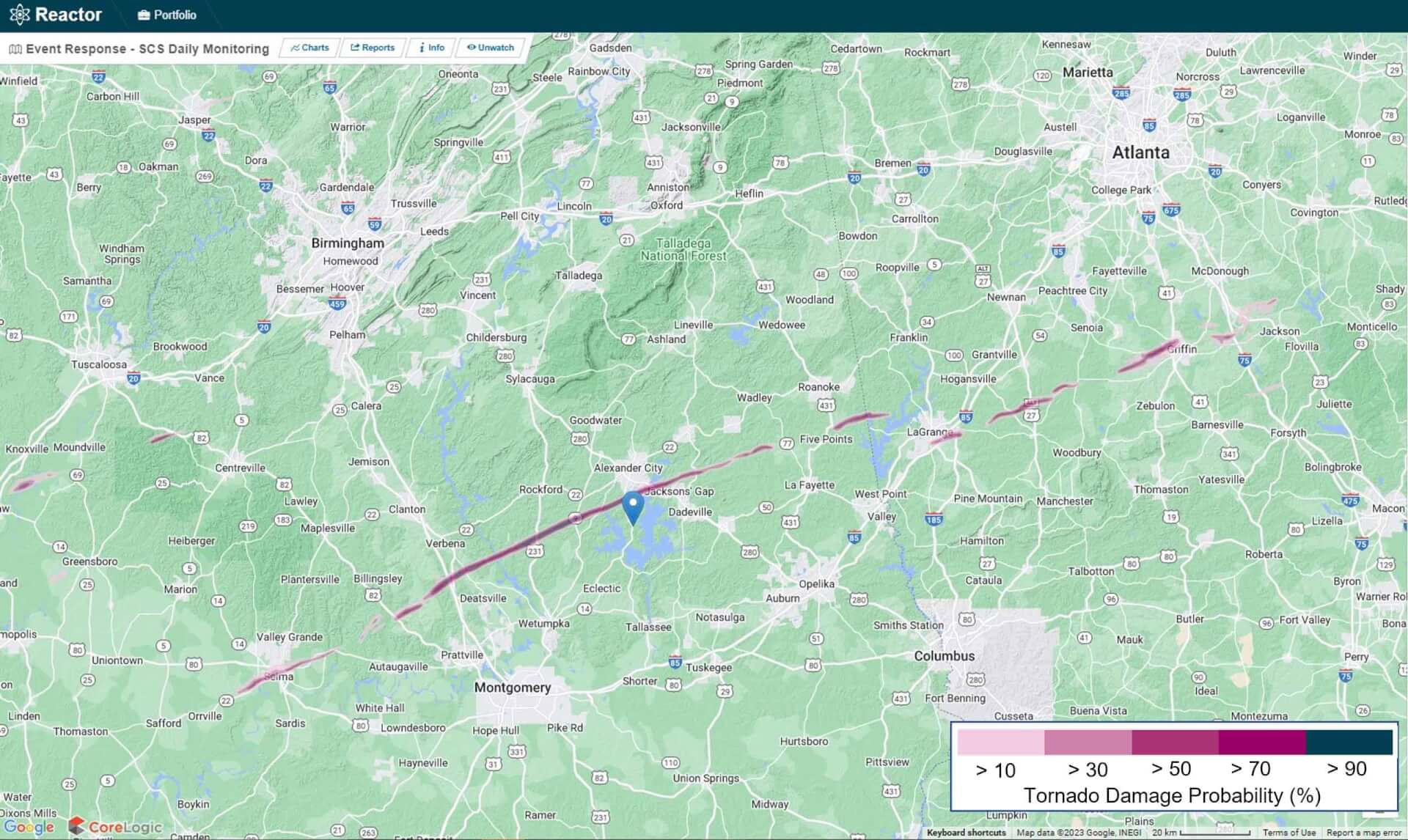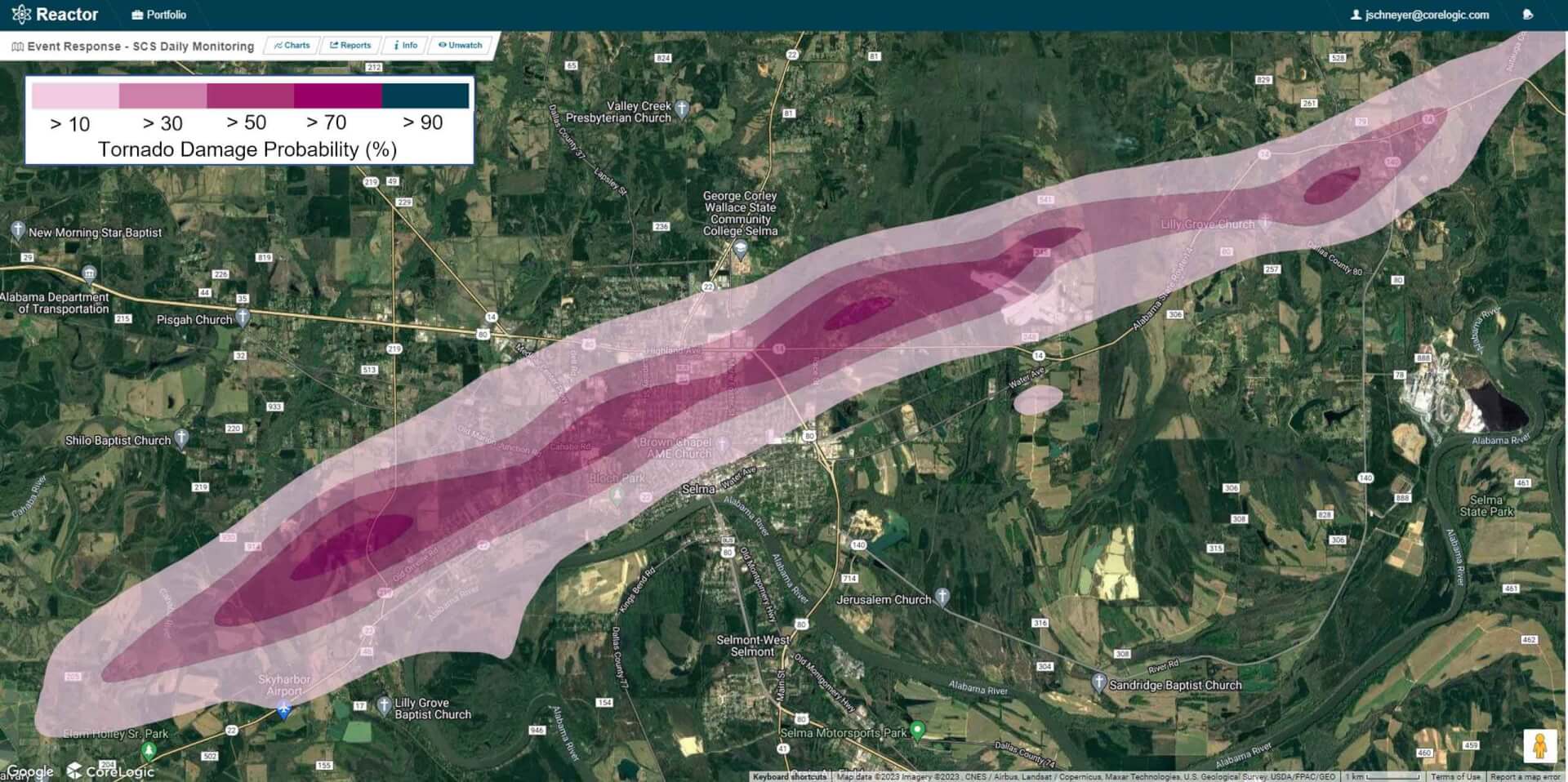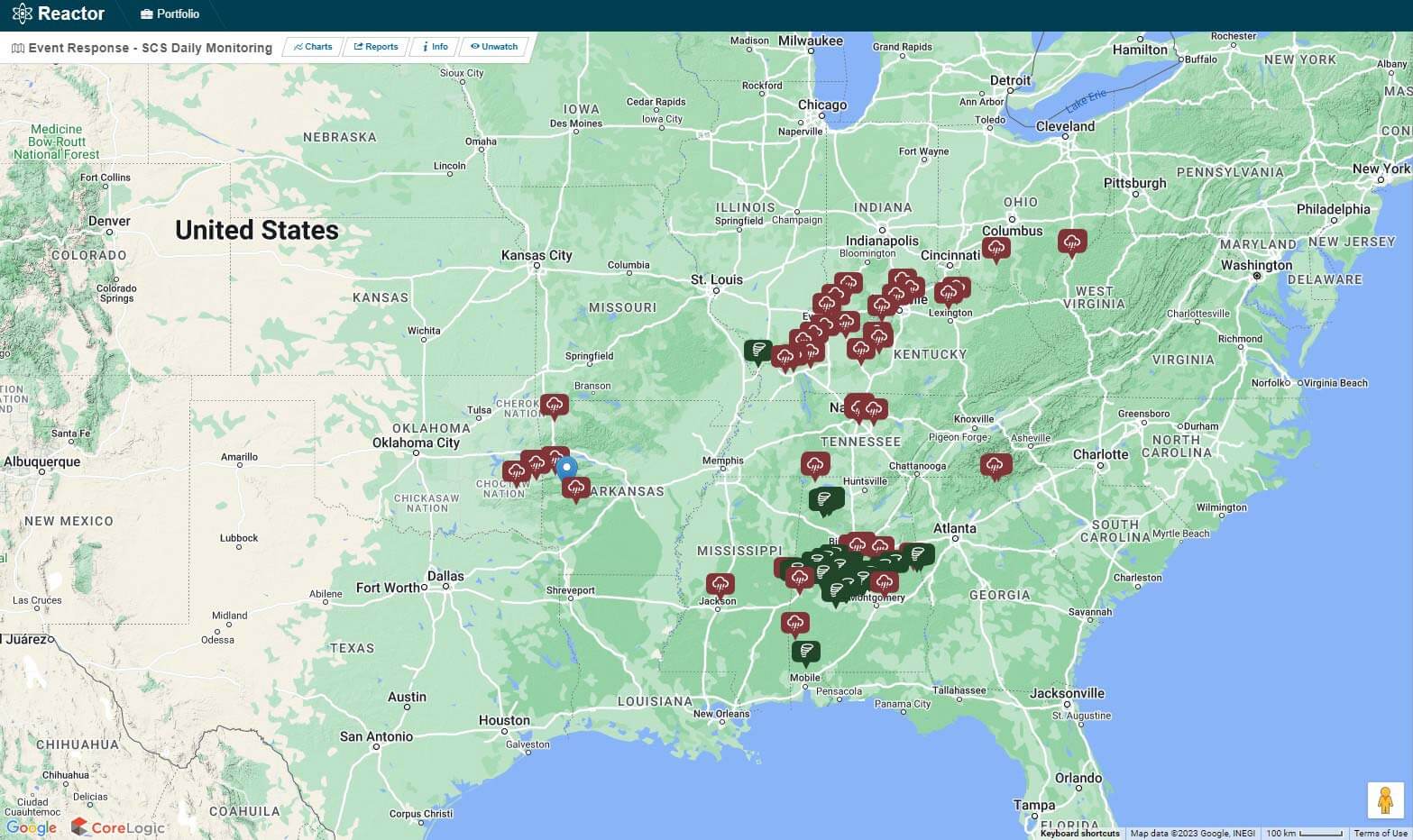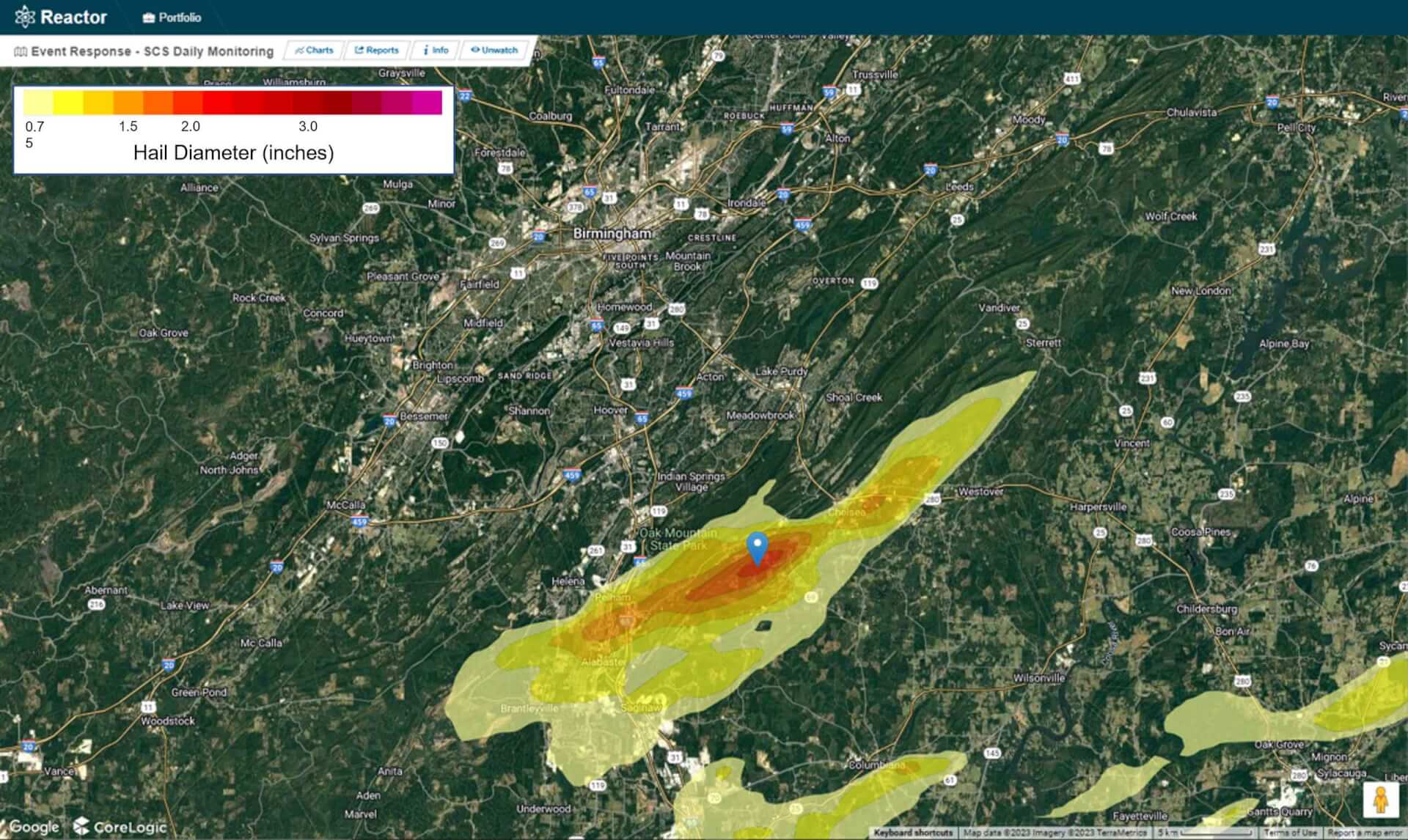January 12 Tornado Outbreak in Mississippi, Alabama and Georgia
Hail, straight-line winds and tornadoes from a severe thunderstorm system damaged property across areas of Mississippi, Alabama and Georgia. Selma, Alabama was one of the hardest hit cities on Jan. 12.
More Than 16,800 Homes Worth an Estimated $4.5 Billion Within Tornado Path
CoreLogic® estimates approximately 16,800 single- and multifamily residential properties with a combined reconstruction value (RCV) of $4.5B were within the tornado paths across Mississippi, Alabama and Georgia. Table 1 provides the top five counties by the number of residential properties within the tornado path.
Table 1: The Top Five Counties by Number of Residential Properties Within Tornado Paths Across All Impacted States
| County | State | Property Count | RCV ($ mn) |
| Dallas | AL | 5,755 | 1,604 |
| Spalding | GA | 4,227 | 1,028 |
| Henry | GA | 1,365 | 389 |
| Troup | GA | 866 | 210 |
| Tallapoosa | AL | 733 | 228 |
Source: CoreLogic, Inc.
© 2023 CoreLogic,Inc., All rights reserved.
Note, not all properties within the tornado footprint suffered damage. A damaged structure may not have suffered 100% loss up to the full reconstruction value.
A single supercell thunderstorm traveled more than 550 miles across multiple states. It was responsible for the most severe tornadoes, in terms of intensity and size of impacted region. Tornadoes were recorded starting in Selma, Alabama, and continuing northeast into Georgia (Figure 1). The National Weather Service (NWS) reported that the Selma tornado reached EF-2 status with estimated peak wind speeds of 130 mph.
Figure 1: Tornadic Activity Across Alabama and Georgia as Viewed in CoreLogic® Reactor

Source: CoreLogic, Inc.
© 2023 CoreLogic,Inc., All rights reserved.
CoreLogic® Tornado Forensics Technology captured the 20-mile path that crossed downtown Selma (Figure 2). A high probability of damage (50%) is expected in Selma, and local reports from the area indicate that material building damage occurred on Jan. 12.
Figure 2: Tornado Path That Crossed Downtown Selma, Alabama, As Viewed in CoreLogic® Reactor. Darker Colors Represent Higher Probabilities of Damage

Source: CoreLogic, Inc.
© 2023 CoreLogic,Inc., All rights reserved.
The National Oceanic and Atmospheric Administration (NOAA) Storm Prediction Center (SPC) reported tree and structural damage in Selma, Alabama, including heavy damage at the Selma Country Club. The NWS post-event survey noted roof and foundation damage to several manufactured homes and heavy exterior wall damage to structures throughout Selma.
The severe weather is responsible for widespread power outages across Alabama and Georgia, and over 160,000 customers were without power as of Jan. 12 at 5:25 p.m. EST, according to poweroutage.us.
Cold-Season Tornadoes Continue to Hit Southeastern U.S.
A cold front moved eastward across the southern U.S. on Jan. 12, leaving behind a path of destruction in the form of hail, tornadoes and severe straight-line winds. According to NOAA, there were more than 20 tornado reports across Mississippi, Alabama and Georgia, as well as more than 40 hail reports from Oklahoma to West Virginia (Figure 1).
Figure 3: Jan. 12 Tornado (Dark Green Markers) and Hail (Red Markers) Outbreak as Viewed in CoreLogic® Reactor

Source: CoreLogic, Inc.
© 2023 CoreLogic,Inc., All rights reserved.
Two-Inch Hail Reported South of Birmingham, Alabama
The cold front dropped hail ranging from three-quarters of an inch to over two inches across southeastern U.S. CoreLogic Hail Verification Technology has mapped two-inch diameter hail in Shelby County, Alabama, approximately 15 miles southeast of downtown Birmingham (Figure 4).
Figure 4: Hail Swath Outside Birmingham, Alabama on Jan. 12 as Viewed in CoreLogic®Reactor

Source: CoreLogic, Inc.
© 2023 CoreLogic,Inc., All rights reserved.
Two-inch diameter hail is slightly larger than a golf ball and can fall at speeds close to 40 mph, according to National Oceanic and Atmospheric Administration (NOAA) National Severe Storms Laboratory (NSSL). This size is considered “Very Large Hail” by the National Weather Service (NWS) and is able to cause moderate damage to property such as buildings, automobiles and agriculture.
Hail with a diameter greater than one inch was also recorded near Nashville, Tennessee, north of Greenville, South Carolina, and northeast of Atlanta, Georgia.
Visit www.hazardhq.com for updates on the Jan. 12 severe thunderstorms and information on future catastrophes around the globe.
© 2022 CoreLogic,Inc., All rights reserved.




